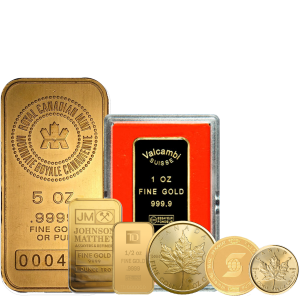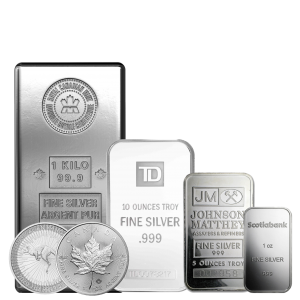

Back
How Gold Coins, Gold Bars, and Gold Rounds Are Different
June 25, 2025
Overview
There are typically three primary alternatives that purchasers are faced with when they are contemplating an investment in physical gold. There is a major difference between gold bars, gold coins, and gold rounds in terms of form, cost, recognition, and purpose, even though they all fulfill the objective of conserving wealth and protecting investments from inflation. If you want to make the proper choice depending on your financial objectives, you must have a solid understanding of these distinctions.
Gold Bars: What Are They?
Gold bars are rectangular chunks of gold that can range in size from as tiny as one gram to as large as a 1-kilo gold bar (32.15 troy ounces). They often bear the lowest premiums over the 1 oz gold price .
Gold bars are an excellent choice for individuals who place a high value on receiving the most gold for their money. In the best-case scenario, bulk investors are seeking the lowest price per ounce of gold.
Coins made of gold are what?
Legal tender, gold coins are manufactured by sovereign mints and guaranteed by a government authority. They are legal money. Each coin has a face value, but the true gold value is far more than this nominal amount. Additionally, the designs on coins frequently include famous motifs that have historical or cultural importance.
- • The United States Mint American Eagle.
- • The Canadian Gold Maple Leaf
- • Minted at the South African Mint, the Krugerrand Gold Coin
- • Britannia of the Royal Mint.
- • Mexican Mint, Mexican Gold Libertad.
Investors who are looking for highly known assets that are guaranteed by the government and have liquidity and collector appeal are the best candidates.
Gold rounds are a kind of gem.
In appearance, gold rounds are comparable to coins; nevertheless, they do not have the status of legal money. They have not been issued with a face value because they are privately minted. Gold rounds have smaller premiums than coins made by the government. Gold and silver rounds are produced largely for investment or commemorative reasons.










